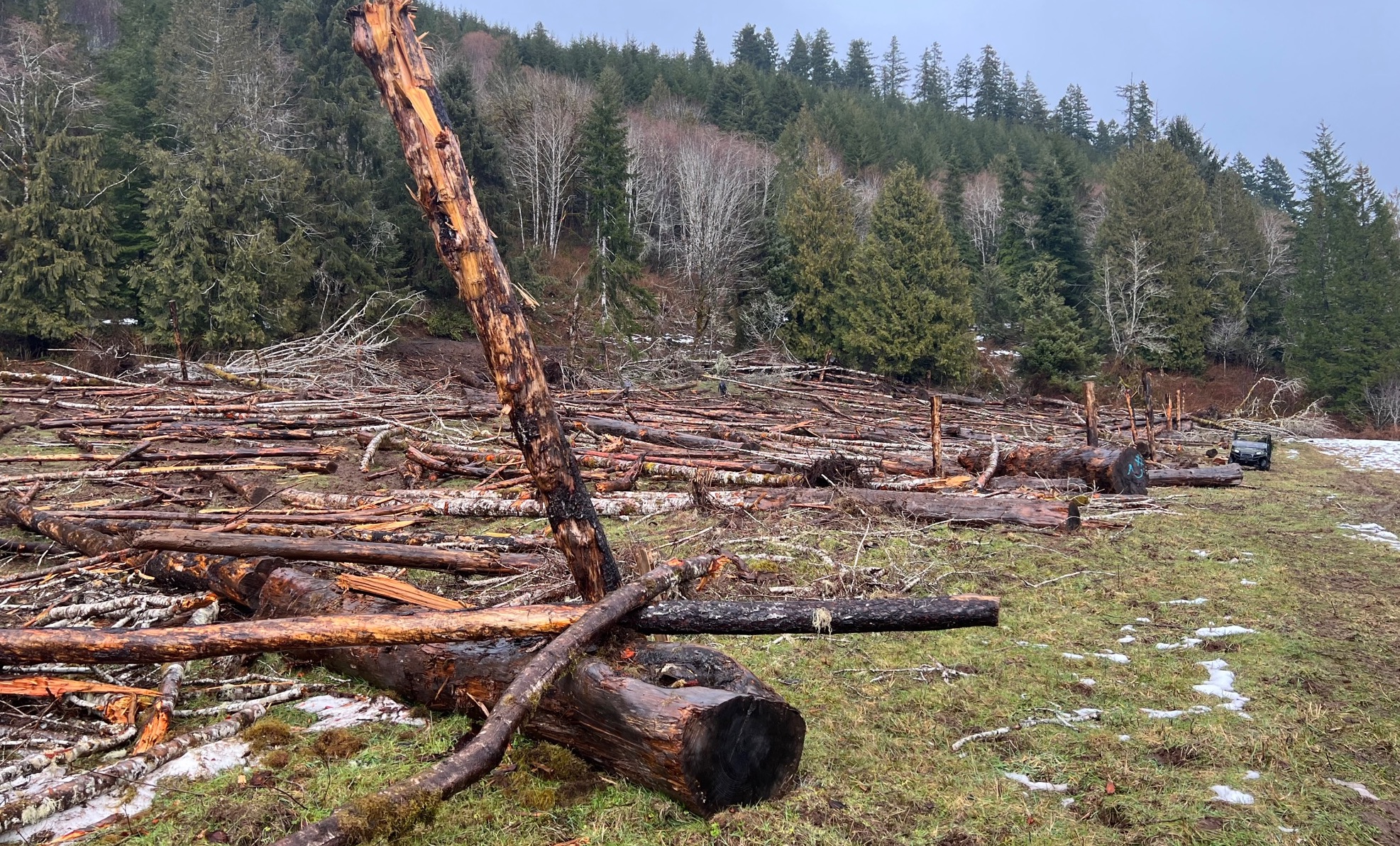
By DANA TIMS/YachatsNews
Those bow hunting trips Roger Worthington took with his dad to the Tenmile Creek area south of Yachats decades ago planted seeds that are reshaping the landscape for perhaps centuries to come.
Worthington, now a highly successful lawyer and founder of a number of Bend-area businesses, is the newest partner in an ongoing effort to restore Tenmile Creek to its pre-farming, pre-logging state.
It’s an area he first got to know as a kid, tagging along on bow-hunting ventures with his dad, David “Punch” Worthington, who stalked the thickets and brambles for 15 or so mostly unsuccessful seasons in search of elk.
“Like the other residents, I want to preserve this wonderful and unique forest for future generations,” Worthington told YachatsNews. “And maybe one day the timber wolves will return.”
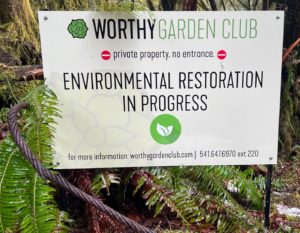
One of his companies, Worthy Environmental, bought a 64-acre parcel in the Tenmile Creek area several years ago. The company, using money set aside from commercial thinning operations on federal lands, deployed a team of restoration contractors to plant more than 15,000 native plants and trees.
The work is considered a critical piece of long-term efforts to restore fish and forests to an area that is bounded by the 9,300-acre Cummins Creek Wilderness Area to the north and the 7,400-acre Rock Creek Wilderness Area to the south.
Joining in the push to “rewild” the land is Portland Audubon, which acquired its Tenmile Creek Sanctuary in 1990 at a time battles raged about protecting Oregon’s old-growth forests. The sanctuary now encompasses about 340 acres.
Tenmile Creek, six miles south of Yachats, is considered so important because it contains the largest intact stand of coastal temperate rainforest of Sitka Spruce and Western Hemlock in the lower 48 states, said Paul Engelmeyer, a long-time forest advocate and manager of Portland Audubon’s Ten Mile Creek Sanctuary.
In additional to providing habitat to the federally listed marbled murrelet and northern spotted owl, the area contains species such as Roosevelt elk, black-tailed deer, cougar, black bear, bald eagles and federally threatened coho salmon, chinook salmon and steelhead trout.
“In trying to restore this area, we are talking about a really complex story with a lot of moving parts,” Engelmeyer said. “But the good news is that we’re talking about the Coast Range, where the growth rate is unbelievable. If there was ever a place you’d feel good about having a shot to heal the landscape, this is it.”
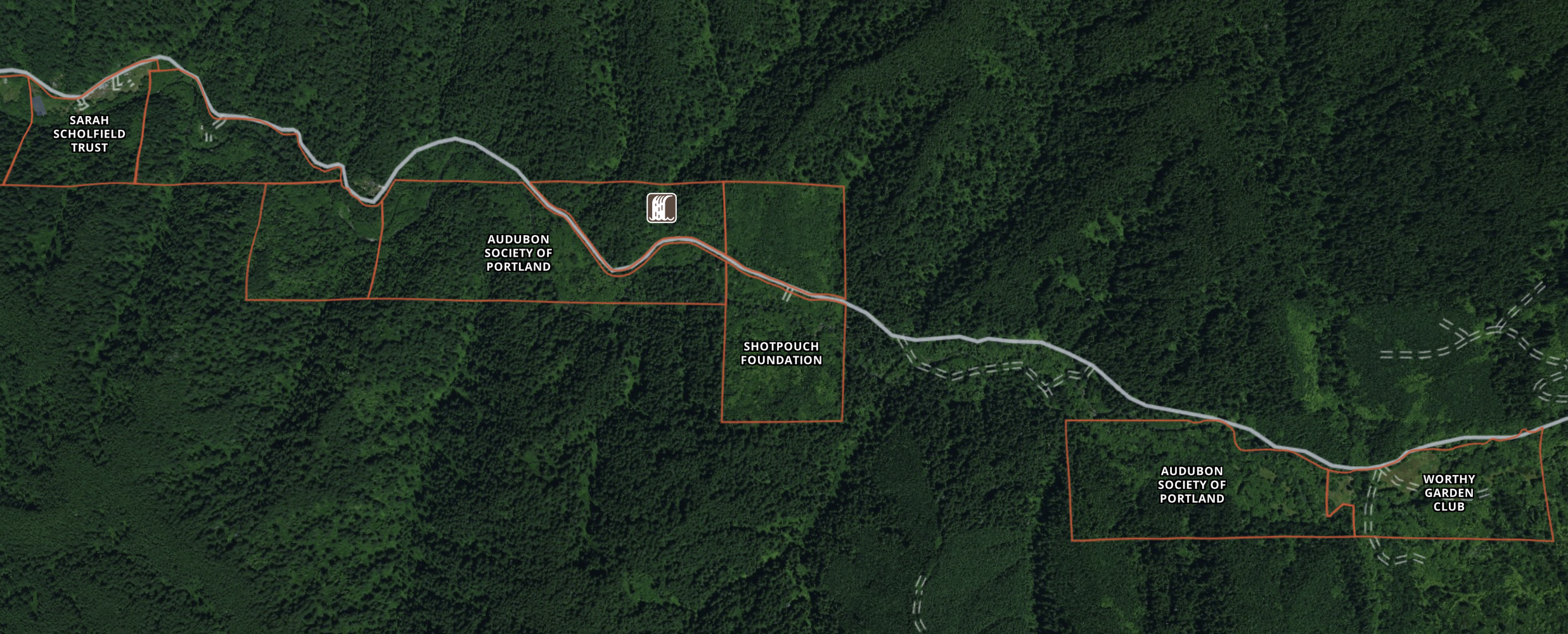
A Worthy cause
Engelmeyer related a story about bumping into Worthington, who still recreates in the Tenmile Creek area with his own son, several years ago at a community gathering.

“He asked what he could do to help out with any projects around Yachats,” Engelmeyer said. “I said, ‘Well, there’s a parcel available right here up in Tenmile Creek.’ Roger stepped in and we have been moving ahead ever since.”
Efforts this winter and spring included replanting work by Habitat Contracting, a small Eugene-based company owned by Jeff Jones, said Evan Heeb, Worthy Environmental’s director. Seth Mead of the Siuslaw and Water Conservation District has also been involved.
Heeb noted that the “untrained eye” might sweep over Tenmile Creek’s rugged hillsides and lower-lying areas and see nothing but large heaps of woody debris and seemingly randomly downed trees piled on the ground.
“Someone might take a look at our giant excavator and all those mounds of wood and not understand that, while restoration is the ultimate goal, we are trying to replicate disturbances that create quality habitat in the long run,” he said.
To do that, crews have, among things, cut trees at strategic points around the property and hauled in logs felled near Florence to increase woody material that will continue to decompose and accommodate myriad native species.
“We are trying to simulate hundreds of logs falling over the course of several hundred years,” Heeb said. “Excavators are scattering them willy-nilly across the site.”
He added that considerable amounts of invasive Scotch Broom and Himalayan blackberries have also been removed.
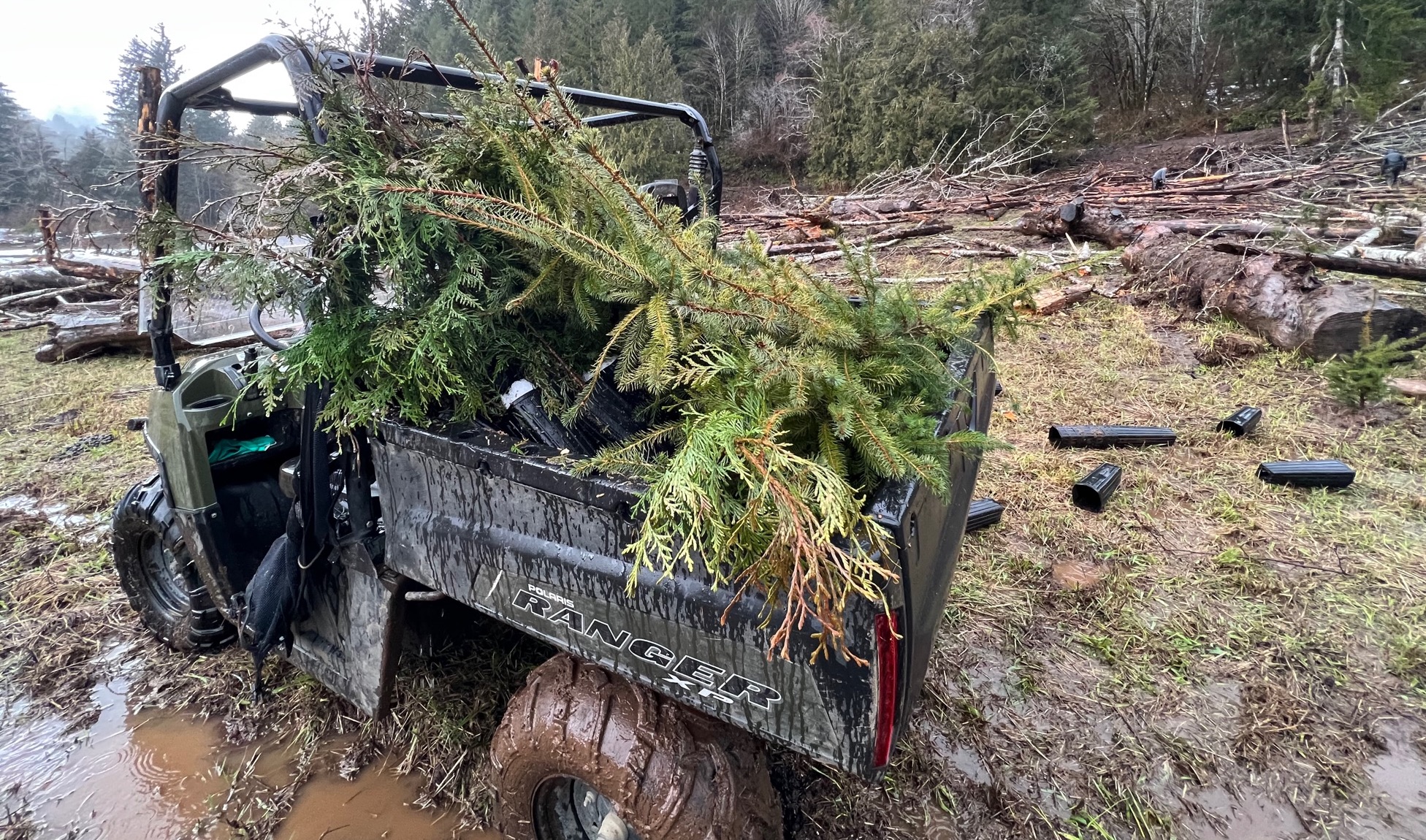
Traditional replanting efforts, undertaken in instances of commercial logging on public and private lands, typically focus only on Douglas fir. These often result in monocultural plantations that lack the diversity that helps stave off insect attacks and disease.
The Tenmile Creek restoration effort is shaping up far differently.
Heeb said large amounts of willow, for instance, are being added to the lower-elevation areas, where past homesteaders ran herds of cattle that grazed native willows to the ground.
Other species being replanted include western red cedar, hemlock, spruce, alder, several varieties of native plants and shrubs and, yes, Douglas fir.
The ultimate goal is replacing meadows cleared by homesteaders beginning around 1900 with a healthy forest understory and a full forest canopy that may not close for anywhere from 100 to 300 years.
“It’s something you’re doing for your grandchildren and your great-grandchildren,” Heeb said. “None of us alive now will be around to see the real fruits of this work, but it’s great to be part of this new chapter for Tenmile Creek.”
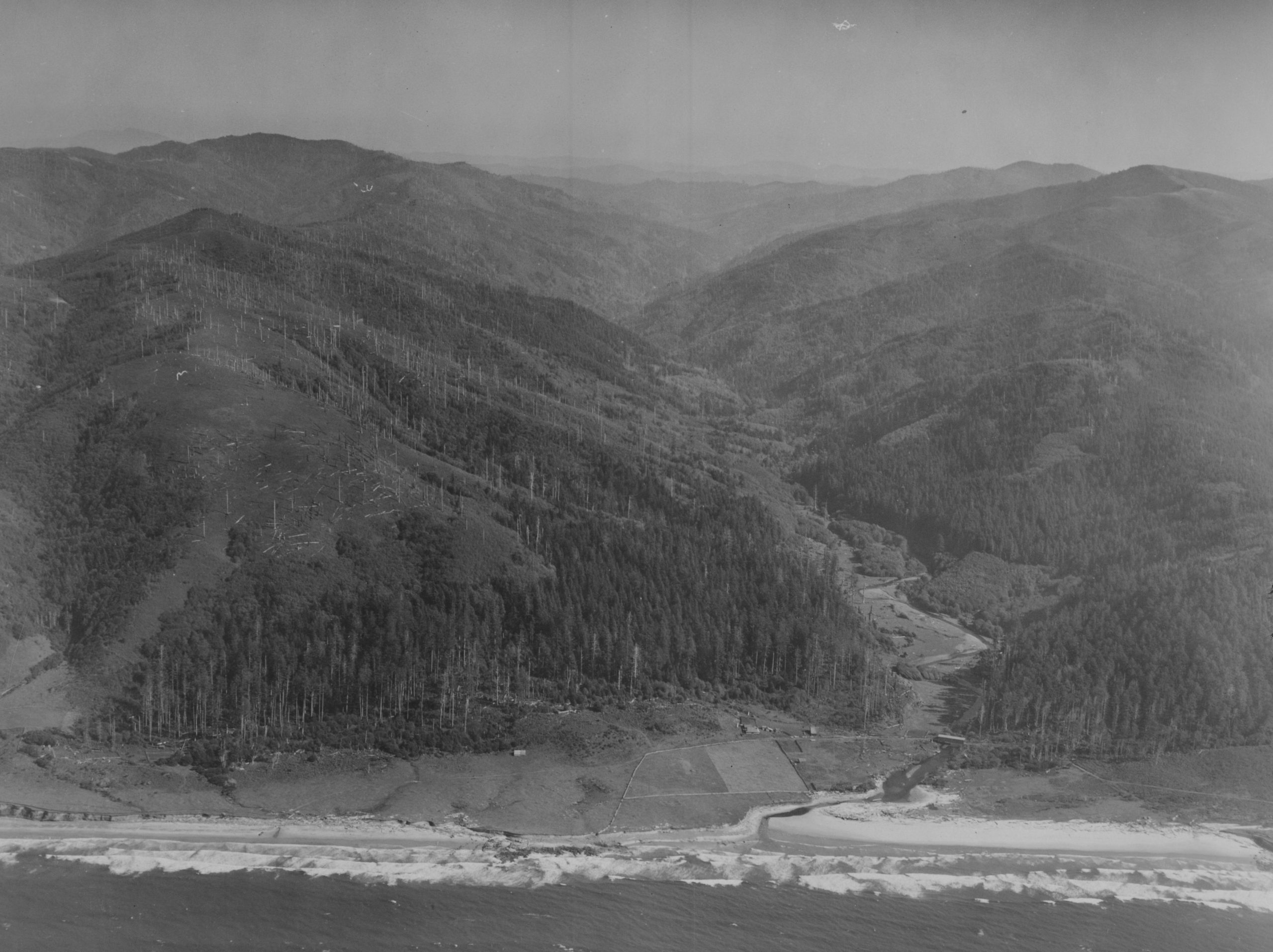
The homesteaders
Exactly how the area was cleared in the first place is an entirely different story, and one that long-time Tenmile Creek resident Hans Radtke knows as well as anyone.
Radtke, 82, is a mostly retired marine economist who, with his wife, Karin, bought 91 acres in Tenmile Creek in 1972, when he was still a student at Oregon State University. After professional stints in Iowa, Nevada and elsewhere, the couple returned to Tenmile Creek, where they built a house in 1980.
Over time, Radtke became interested in the stories of the “old-timers” who homesteaded in the area and, in some cases, whose dilapidated, ancient-appearing shacks and cottages still dotted the landscape.
He video taped interviews with a couple of former homesteaders and combed through voluminous public records to compile a 36-page account of individual stories and what he called “a short description of the changes of land ownership on the upper Tenmile Creek valley.”
The spark that drew homesteaders to the area in the first place, Radtke wrote, was the Forest Homestead Act, which was passed by Congress and signed into law by President Theodore Roosevelt in 1906. All homesteaders had to do to receive up to 160 acres of free land was show proof – or “prove up” – that they were productively using their parcels for agricultural purposes.
“That was their goal,” Radtke said. “Unfortunately for them, it didn’t quite turn out that way.”
A lack of roads in the area meant that getting felled trees to markets down the coast and in the Willamette Valley almost impossible. Predators such as cougars and bears, meanwhile, severely crimped a farmer’s ability to raise sheep and other stock animals.
And the large-scale clearing efforts needed to farm still weren’t producing crops capable of being sold elsewhere.
“One of these old guys told me that all he really needed to get through the winter was salt and some flour,” Radtke said. “These guys tried pretty damn hard, but what they got for their efforts was a pretty damn hard life.”
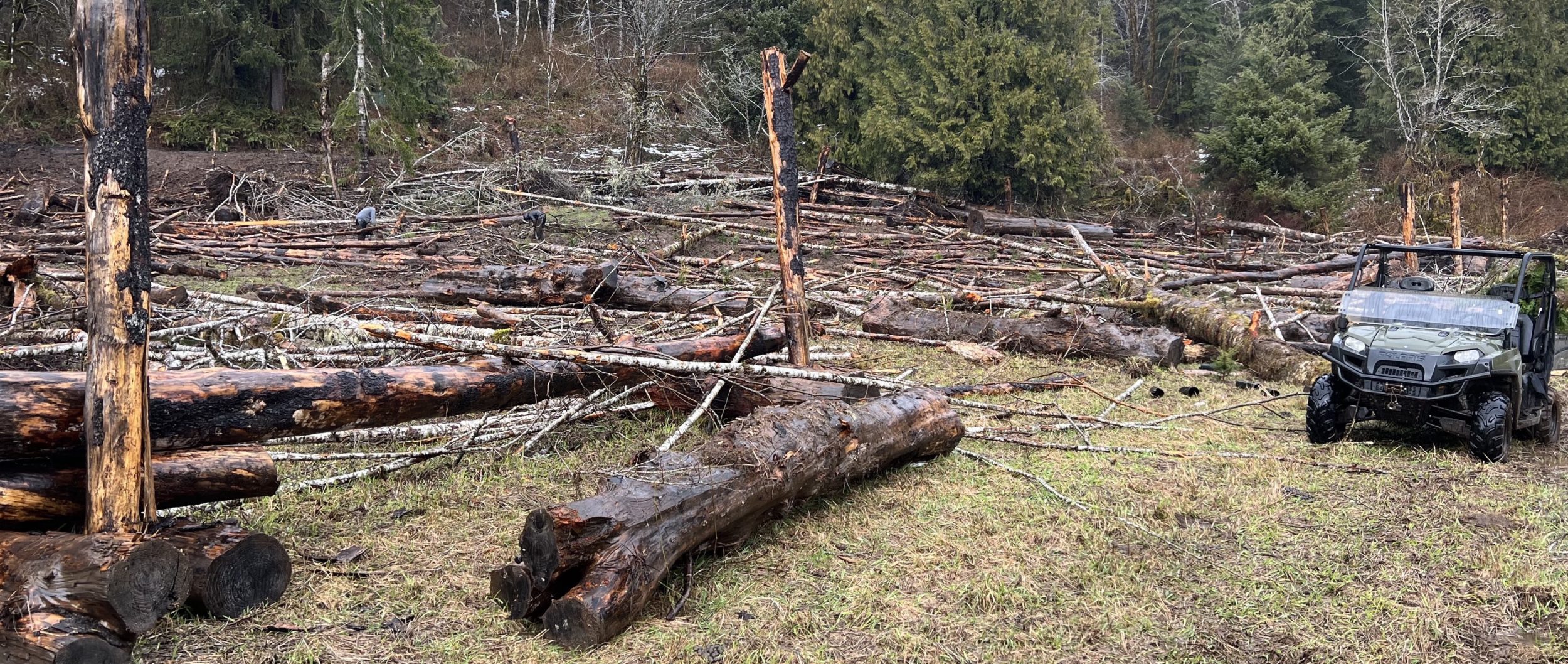
Lasting damage
What did leave its mark in the valley was the lasting environmental damage from all those tree-felling and land-clearing efforts.
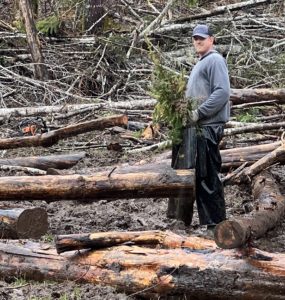
Invasive plant species, for instance, immediately started moving into now-untended fields. And if gravel was needed to build or improve a local road, crews often accessed the nearest and cheapest source by scooping huge truckloads right out of area streambeds, dooming the ability of returning coho or steelhead to find beds to lay their eggs.
Later, fish biologists, thinking that log jams impeded the passage of fish runs, worsened the situation by removing much of the woody debris from the area’s streams and rivers.
“Suddenly, the fish had nowhere to hide and the waters they were swimming in began to get much warmer,” Portland Audubon’s Engelmeyer said. “Runs of nearly two million coho shrank down 50,000 or less.”
Now, with restoration underway, large trees, often flown in by helicopters, are being placed back into small waterways up and down the central Oregon coast. Coho runs throughout area drainages now number around 350,000 annually.
“We’re still paying for some of the practices that occurred generations ago,” Engelmeyer said. “But we have learned so much and, I think, are now on a very good path.”
Looking ahead, he said, additional partners are lining up to buy more parcels for future restoration efforts in the valley.
“We’re not done,” Engelmeyer said. “We have more opportunities on the horizon, and our ability to connect all of these coastal watersheds remains very much alive.”
- Dana Tims is an Oregon freelance writer who contributes regularly to YachatsNews.com. He can be reached at DanaTims24@gmail.com



This makes my heart very happy.
This is the best news I have read in a long time. Thank you all for your efforts.
This is wonderful to read. I’m thankful for each individual involved in this process. Great vision, great stewardship, great partnerships.
I was just up photographing in the Audubon sanctuary property near the 5-mile marker the other day. The two loop trails are slowly disappearing. Paul, where are you – or are you now just going to let those trails become a memory?
Hello Bob, we have been impacted with not being able to work with the Angel Job Corp Forestry crew to maintain the trail system – but they are getting back to work with us this week in fact.
Paul